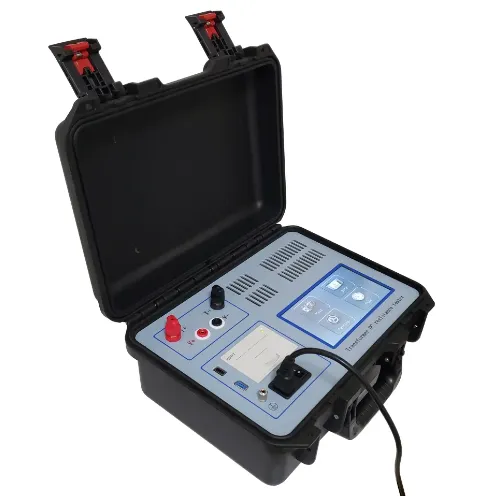 engelsk
engelsk



-
 afrikanska
afrikanska -
 albanska
albanska -
 amhariska
amhariska -
 arabiska
arabiska -
 armeniska
armeniska -
 azerbajdzjanska
azerbajdzjanska -
 baskiska
baskiska -
 vitryska
vitryska -
 bengaliska
bengaliska -
 bosniska
bosniska -
 bulgariska
bulgariska -
 katalanska
katalanska -
 Cebuano
Cebuano -
 Kina
Kina -
 Kina (Taiwan)
Kina (Taiwan) -
 korsikanska
korsikanska -
 Kroatisk
Kroatisk -
 tjeckiska
tjeckiska -
 danska
danska -
 holländska
holländska -
 engelsk
engelsk -
 esperanto
esperanto -
 estniska
estniska -
 finska
finska -
 franska
franska -
 frisiska
frisiska -
 galiciska
galiciska -
 georgiska
georgiska -
 tysk
tysk -
 grekisk
grekisk -
 Gujarati
Gujarati -
 haitisk kreol
haitisk kreol -
 hausa
hausa -
 hawaiian
hawaiian -
 hebreiska
hebreiska -
 Nej
Nej -
 Miao
Miao -
 ungerska
ungerska -
 isländska
isländska -
 igbo
igbo -
 indonesiska
indonesiska -
 irländsk
irländsk -
 italienska
italienska -
 japanska
japanska -
 javanesiska
javanesiska -
 Kannada
Kannada -
 kazakiska
kazakiska -
 Khmer
Khmer -
 rwandiska
rwandiska -
 koreanska
koreanska -
 kurdiska
kurdiska -
 kirgiziska
kirgiziska -
 TB
TB -
 latin
latin -
 lettiska
lettiska -
 litauiska
litauiska -
 Luxemburgiska
Luxemburgiska -
 makedonska
makedonska -
 Malgashi
Malgashi -
 malajiska
malajiska -
 Malayalam
Malayalam -
 maltesiska
maltesiska -
 Maori
Maori -
 Marathi
Marathi -
 mongoliska
mongoliska -
 Myanmar
Myanmar -
 nepalesiska
nepalesiska -
 norska
norska -
 norska
norska -
 occitanska
occitanska -
 Pashto
Pashto -
 persiska
persiska -
 putsa
putsa -
 portugisiska
portugisiska -
 Punjabi
Punjabi -
 rumänska
rumänska -
 ryska
ryska -
 Samoan
Samoan -
 skotsk gaeliska
skotsk gaeliska -
 serbiska
serbiska -
 engelsk
engelsk -
 Shona
Shona -
 Sindhi
Sindhi -
 singalesiska
singalesiska -
 slovakiska
slovakiska -
 slovenska
slovenska -
 somaliska
somaliska -
 spanska
spanska -
 Sundanesiska
Sundanesiska -
 Swahili
Swahili -
 svenska
svenska -
 Tagalog
Tagalog -
 tadzjikiska
tadzjikiska -
 Tamil
Tamil -
 tatariska
tatariska -
 Telugu
Telugu -
 Thai
Thai -
 turkiska
turkiska -
 turkmeniska
turkmeniska -
 ukrainska
ukrainska -
 Urdu
Urdu -
 Uigur
Uigur -
 uzbekiska
uzbekiska -
 vietnamesiska
vietnamesiska -
 walesiska
walesiska -
 Hjälp
Hjälp -
 jiddisch
jiddisch -
 Yoruba
Yoruba -
 Zulu
Zulu
Understanding Transformer Testing
Transformers are critical components in electrical systems, ensuring the safe and efficient transfer of power. To maintain reliability, transformer testing is essential. Whether it's for a CT transformer testing or other transformer types, understanding transformer test types helps ensure performance and safety.

What is Transformer Testing?
Transformer testing involves a series of procedures designed to assess the health, efficiency, and functionality of a transformer. These tests identify faults, measure performance, and ensure compliance with safety standards.
Common Types of Transformer Tests
Transformer tests can be categorized into two main types: routine tests and special tests.
1. Routine Tests
Routine tests are standard procedures conducted on every transformer before it leaves the factory. These tests verify the transformer’s compliance with design specifications.
- Insulation Resistance Test
Ensures that the insulation between windings and the core is intact. - Voltage Ratio Test
Confirms the transformer's output voltage matches the design specifications. - Winding Resistance Test
Measures the resistance of windings to detect faults like open circuits. - Polarity Test
Determines the polarity of the transformer, critical for proper connection in the network.
2. Special Tests
Special tests are performed based on specific requirements or unusual operating conditions.
- Short-Circuit Test
Simulates a fault condition to evaluate the transformer's thermal and mechanical strength. - Temperature Rise Test
Monitors the transformer's heat-handling capability during prolonged operation. - Impulse Test
Assesses the transformer's ability to withstand high voltage surges, such as lightning strikes.
CT Transformer Testing
CT transformers (Current Transformers) require precise testing to ensure accurate current measurement and safe operation in high-voltage systems.
Key CT Transformer Tests
- Excitation Test
Determines the core's magnetization characteristics. - Ratio Test
Verifies the accuracy of the transformation ratio, essential for metering and protection. - Polarity Test
Ensures the secondary winding polarity aligns with the primary winding for proper function.
Why Conduct Transformer Tests?
1. Prevent Equipment Failures
Routine testing helps detect potential faults before they escalate into catastrophic failures.
2. Ensure Safety
Transformers operate at high voltages. Regular testing minimizes risks of electrical accidents.
3. Maintain Efficiency
Testing ensures transformers perform efficiently, reducing energy losses and operational costs.
4. Regulatory Compliance
Transformer testing ensures adherence to industry standards, including IEC and IEEE guidelines.
Transformer Test Equipment
Conducting transformer tests requires specialized equipment:
- Insulation Testers
Measure the insulation resistance between windings and core. - Turns Ratio Testers
Verify the voltage ratio of primary to secondary windings. - Tan Delta Test Kits
Assess insulation health by measuring dielectric losses. - Power Quality Analyzers
Monitor harmonic distortion and efficiency levels.
Best Practices for Transformer Testing
- Regular Maintenance: Schedule routine checks to ensure ongoing reliability.
- Skilled Personnel: Tests should be performed by trained professionals using appropriate equipment.
- Detailed Records: Maintain logs of test results for future reference and trend analysis.
- Proper Environment: Conduct tests in safe, controlled conditions to avoid damage or accidents.
Transformer testing is an indispensable part of ensuring the longevity, efficiency, and safety of electrical systems. Whether performing CT transformer testing or other types, understanding the various transformer test types equips you with the knowledge to maintain optimal transformer performance. Regular testing not only prevents costly failures but also upholds safety and compliance in critical power systems.
-
Testing Equipment Industry Sees Major Advancements in 2025: Smart & Precision Technologies Lead the WayNyheterJun.06,2025
-
Applications of Direct Current Generators in Renewable Energy SystemsNyheterJun.05,2025
-
Hipot Tester Calibration and Accuracy GuidelinesNyheterJun.05,2025
-
Digital Circuit Breaker Analyzer Features and BenefitsNyheterJun.05,2025
-
Benefits of Real-Time Power Quality Monitoring Devices for Industrial EfficiencyNyheterJun.05,2025
-
Earth Fault Loop Testing in High-Rise Building Electrical SystemsNyheterJun.05,2025



